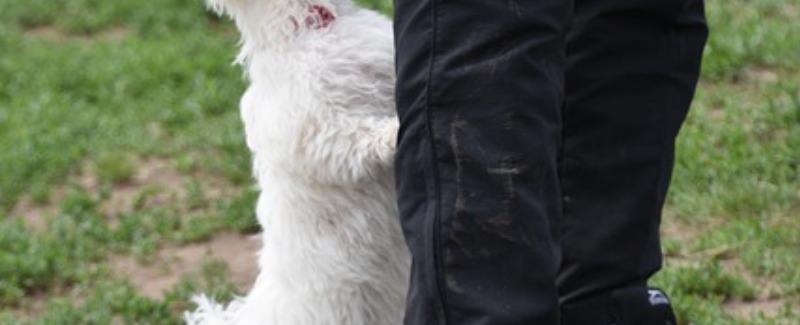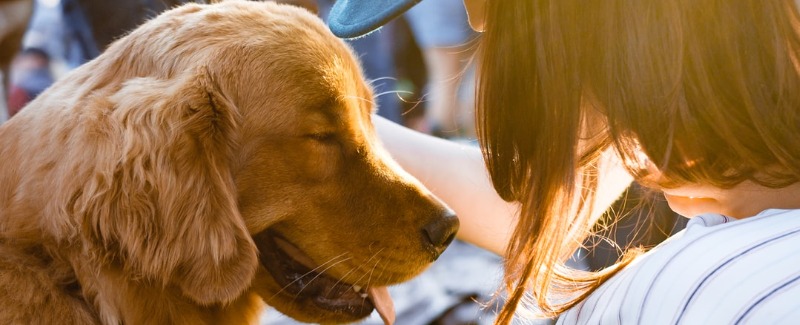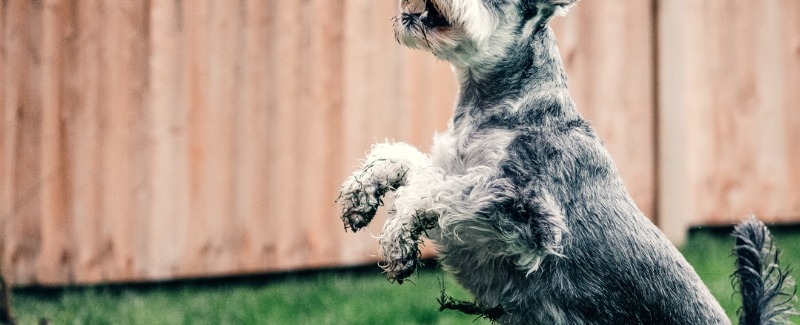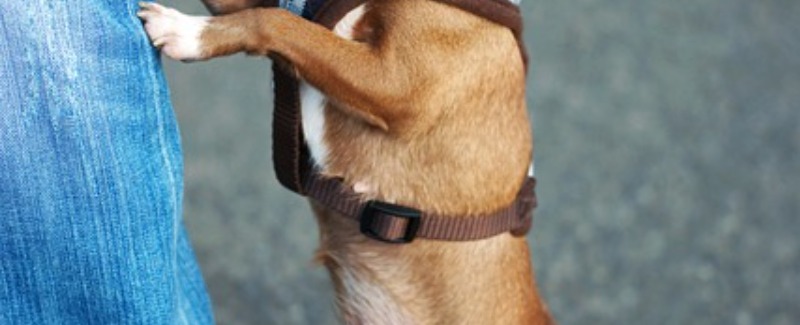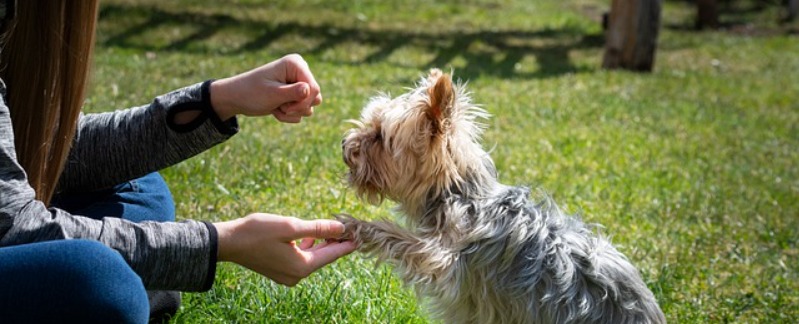By now, you probably realize that it’s not enough to just stop your dog from jumping up on people. You have to give her something to do instead of jumping, too. During the training process, avoid giving your dog the chance to make the mistake of jumping up, and insist that everyone who interacts with your dog follows the new rules.
Sit or Down for Greeting
Contents
Whenever you teach your dog a replacement behavior for a behavior you are trying to extinguish from your dog’s repertoire, it’s best to use a mutually exclusive behavior. Mutually exclusive behavior means that your dog can’t practice the old behavior and the new one at the same time.
Sit and down both fulfill the exclusivity obligation, so pick the one that makes the most sense for you and your dog. If you’re going to eventually want to have your dog become a certified Canine Good Citizen or therapy dog, then it makes sense to teach the sit for greeting, because it’s part of both tests. If you have a dog that will be interacting with lots of small children, or has a tendency to paw, even when sitting, the down may be a better idea.
Have a jumping-up training party. Invite five friends over, staggered out every 30 minutes. Work on not jumping up with each guest. If time allows, have each guest exit through another door and come ring the doorbell again for lots of repetition in a short time.
Get control of your dog in the position of your choice before the greeting. There can be no interaction until your dog is calm. As soon as he is, the person can approach, but don’t have them pet yet. You or they can reward your dog for maintaining calm and the correct position. As long as all is well, continue until the visitor can pet and even kneel in front of your dog. If your dog gets hysterical and loses it at any time during the training process, the person should back off and ignore him until he’s calm again. Be satisfied with a quick scratch on the chest to start, and keep the whole event calm.
The Easy Way Out
Sometimes it’s easier just not to worry about having your dog greet people at all, and just give him something completely different to think about and do. Try throwing a handful of kibble on the floor the next time the doorbell rings. Your dog may be so preoccupied snarfing up all the kibbles that he doesn’t even notice the pizza-delivery guy. A special or treat-dispensing toy that you keep near the door are other low-effort options for occupying your dog’s attention.
The Determined Jumper
Determined jumpers are the dogs that jump on everybody, with no discretion. They are just as likely to jump on (or steamroll) a toddler as they are a teenager or a senior citizen. Most determined jumpers have been rewarded into the habit, but some personality aspects come into play as well. Some hysterical jumpers are just generally pushy and demanding, albeit affectionate; while others are submissive, and their jumping up is a classic gesture of submission.
If your dog’s jumping habit is too ingrained, or you just can’t seem to get your act together to provide consistent management and training, there are special body harnesses that are designed to reduce or eliminate jumping. They are somewhat effective for most dogs, and are worth a try, at least to avoid reinforcing the jumping habit.
Harsh corrections, yelling, or getting angry with submissive jumpers usually makes them worse. Like submissive wetters, when they’re disciplined, they have to repeat the submissive gesture with more intensity to prove how really submissive they are. They are best dealt with in a calm, matter-of-fact manner. Give them specific tasks, manage them well, and reward correct choices.
When Jumping Turns Into Humping
How rude! Dogs humping people is never okay. It’s not funny and it’s not cute, even if it’s a little dog doing the humping. Dogs that hump people are trying to establish dominance. Actually they’re not even trying; if they’re humping and getting away with it, they’re already dominant. Even between dogs, humping isn’t usually sexual in nature; it’s about establishing rank.
If your dog consistently humps you or anyone else, the first thing to do is to put your dog on a leadership program. Make him earn absolutely everything, and don’t allow him on any furniture or your bed. You also have to make sure that your dog is always dragging a leash or dragline so you can get control of him quickly. You may have to add some aversives to get your point across.
Effective Corrections
If you’ve been diligent about managing your dog and training a replacement behavior, and your dog is still jumping up, it’s time to consider adding a punisher. When it comes to corrections for jumping, it seems like there are almost as many different corrections as there are dogs. And that’s a good thing, because if what you’re using as a correction isn’t working to decrease the frequency or the intensity of the behavior within a few repetitions, you can switch to something else that might work better for your individual dog. Following are some common corrections for jumping up:
- The knee-in-the-chest method, mentioned first only because it’s probably the most well known, not because it’s the best. Use caution; it can injure you or the dog.
- Walk into the dog. With your feet close to the ground, scoot quickly straight forward into your dog’s space, intercepting his jump before he has feet on you if possible.
- Ignore him or turn your back on him. The object is to wait until he stops jumping and reward that. Of course, this method is not really practical for determined jumpers.
- Grab his feet or pinch his toes. If you try this, you want to hold him up in the air for a little longer than he’d like to be there. Some dogs will get mouthy when you do this.
- Step on his back feet. This method requires you to be a bit of a contortionist. The idea is to lightly step on the dog’s back toes so that he’ll jump away.
- Add an aversive. Toss a shaker bottle at your dog’s hind feet, or spray him in the mouth with breath spray or one of the other taste deterrents. This method is very effective, but you have to be armed and ready.
- Bonk him on the head. This method is not necessarily recommended, but it is effective for some dogs. It’s not advisable for a soft or shy dog. If you try it, use something other than your hand that can’t injure your dog, like an empty 2-liter soda bottle or a towel that is rolled into a log and taped. Show caution — some dogs will react with aggression, others with shyness.
Whatever correction you use, be prepared so you can correct your dog every time he jumps. Switch to something else if what you’re doing isn’t working reasonably quickly. Remember, just correcting him isn’t enough; you have to teach him to do something else, too.
Some dogs find jumping up so self-reinforcing that they don’t need any external reinforcement to continue the behavior. As mentioned previously, to them, jumping up is fun, or adds a little excitement to an otherwise dull day. They are more likely to need the addition of an aversive to reduce or eliminate the behavior.

